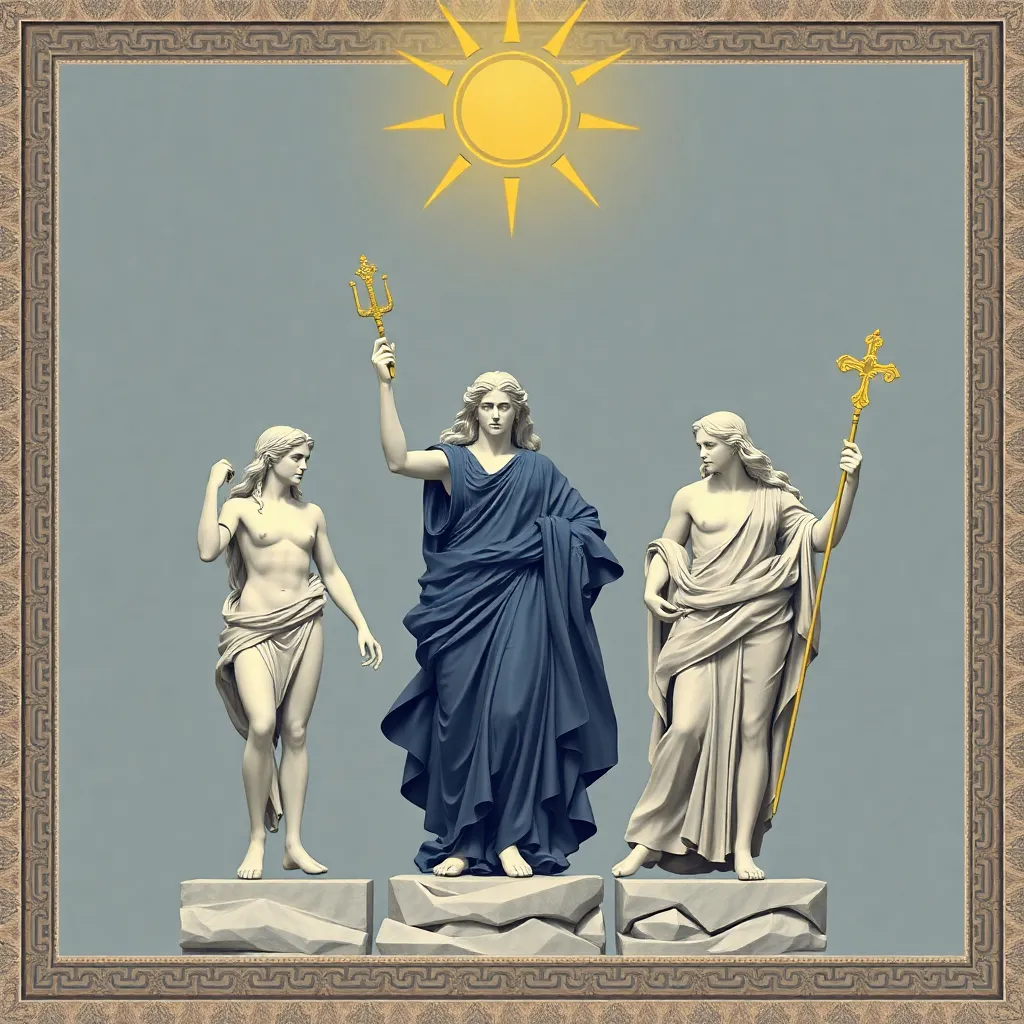The Myths Surrounding Hera’s Children and Their Fates
I. Introduction
In Greek mythology, Hera is revered as the queen of the gods, known for her roles as the goddess of marriage and family. Her character embodies both the sanctity of marital bonds and the tumultuous nature of jealousy and rivalry, particularly in relation to her husband, Zeus.
The stories of her children, including Ares, Hephaestus, Eileithyia, and Hebe, are significant not just for their narrative arcs but also for what they reveal about Hera herself. These myths often serve to illustrate divine interactions and the complexities of familial relationships among the gods. This article aims to debunk myths and explore the truths surrounding Hera’s offspring and their fates.
II. Hera’s Role as the Goddess of Marriage and Family
Hera’s character is multifaceted, embodying both nurturing qualities and fierce protectiveness over her marriage to Zeus. She is often depicted as a regal figure, adorned in luxurious garments, representing the ideal of womanhood and marital fidelity.
Her tumultuous relationship with Zeus, characterized by infidelity and power struggles, deeply impacts her children. Hera’s temper and jealousy play crucial roles in shaping the destinies of her offspring, often leading to conflicts and challenges that they must face.
III. The Birth of Hera’s Children
Hera’s children include:
- Ares – the god of war
- Hephaestus – the god of fire and craftsmanship
- Eileithyia – the goddess of childbirth
- Hebe – the goddess of youth
The myths surrounding their conception often reflect Hera’s complicated emotions towards Zeus and his numerous affairs. Notably, the birth of Ares and Hephaestus is steeped in controversy, with some accounts suggesting that Hera conceived them without Zeus’s involvement as a means to assert her power and independence.
Hera’s jealousy and rivalry with Zeus’s lovers, such as Leda and Alcmene, further complicate the narratives surrounding her children, often leading to their struggles in the wider pantheon.
IV. Ares: The God of War and His Complex Legacy
Ares is often depicted as a fierce and tumultuous god, embodying the chaotic aspects of warfare. Myths present him as a figure who thrives in battle, often accompanied by his companions, Phobos (Fear) and Deimos (Terror).
His relationships with other gods and mortals are marked by conflict and strife. For instance, Ares’s affair with Aphrodite, the goddess of love, symbolizes the tension between love and war, showcasing the duality of human experience.
Despite his fearsome reputation, Ares is often portrayed as a less favorable deity among the Greek pantheon, representing the darker side of human nature. His fate in mythology reflects this, as he is frequently depicted as being defeated or humiliated, highlighting the complexities of his character.
V. Hephaestus: The Outcast God and His Triumphs
Hephaestus’s birth is shrouded in myth, with some accounts stating that Hera, in a fit of jealousy, cast him from Olympus due to his deformity. This rejection marks Hephaestus as an outcast god, often associated with themes of resilience and creativity.
Despite his initial rejection, Hephaestus’s narrative evolves into one of triumph. He becomes the master craftsman of the gods, known for his incredible skill in metallurgy and invention. His creations, including powerful weapons and the majestic throne of Hera, demonstrate his ingenuity and artistry.
Hephaestus’s relationships, particularly with Aphrodite, add layers to his character. Initially married to Aphrodite, their tumultuous relationship often highlights themes of betrayal and acceptance, ultimately leading to his recognition as a significant deity in the pantheon.
VI. Eileithyia and Hebe: The Lesser-Known Offspring
Eileithyia, as the goddess of childbirth, plays a vital role in the myths surrounding motherhood and labor. Her presence is often invoked during childbirth, and she is depicted as a nurturing figure, assisting both mortal women and goddesses alike.
Hebe, on the other hand, represents youth and vitality. Often depicted as a cupbearer to the gods, she embodies the essence of eternal youth and is frequently associated with rejuvenation and the renewal of life.
While Eileithyia and Hebe may not be as prominent as their siblings, their roles highlight important aspects of life and the divine influence on human experiences. They contribute to the larger mythological framework, emphasizing the various dimensions of Hera’s legacy.
VII. The Fate of Hera’s Children: Myths vs. Reality
The fates of Hera’s children are often subject to interpretation, with various myths presenting different outcomes. Ares, although powerful, faces frequent defeats that challenge his status. Hephaestus’s journey from rejection to mastery illustrates resilience, while Eileithyia and Hebe’s stories emphasize the supportive roles of divine figures.
Common misconceptions often arise from simplified versions of these myths. For example, Ares is typically seen solely as a villain, while his complexities reveal deeper insights into human nature. Similarly, Hephaestus’s triumphs are sometimes overshadowed by his initial rejection.
Over time, these myths have evolved, reflecting cultural interpretations and societal values. Understanding these variations is crucial for appreciating the depth of Hera’s legacy and the fates of her children.
VIII. Conclusion
In summary, the myths surrounding Hera and her children provide profound insights into Greek mythology and the human condition. Each child’s narrative serves to highlight the complexities of familial relationships, the impact of jealousy, and the journey from rejection to acceptance.
Understanding these myths beyond their surface-level interpretations enriches our appreciation of Greek mythology. Hera’s legacy, intertwined with the fates of her children, continues to resonate, reminding us of the intricate bonds that define both divine and mortal experiences.




